Being immersed in the fitness industry provides me with a ton of different opportunities to experience different techniques, methodologies, and products. I recently had the privilege of a...
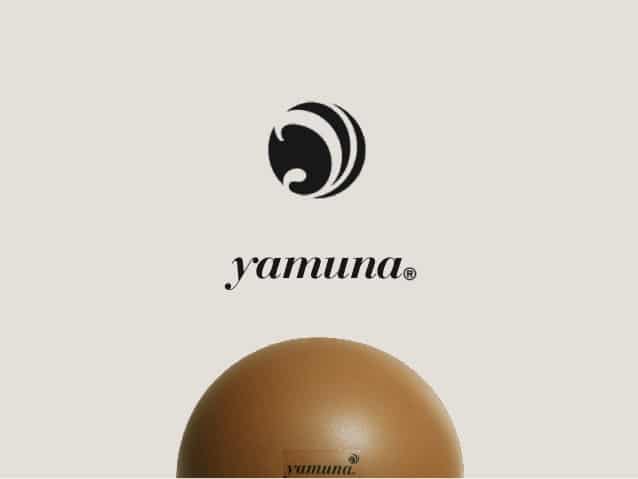

Being immersed in the fitness industry provides me with a ton of different opportunities to experience different techniques, methodologies, and products. I recently had the privilege of a...
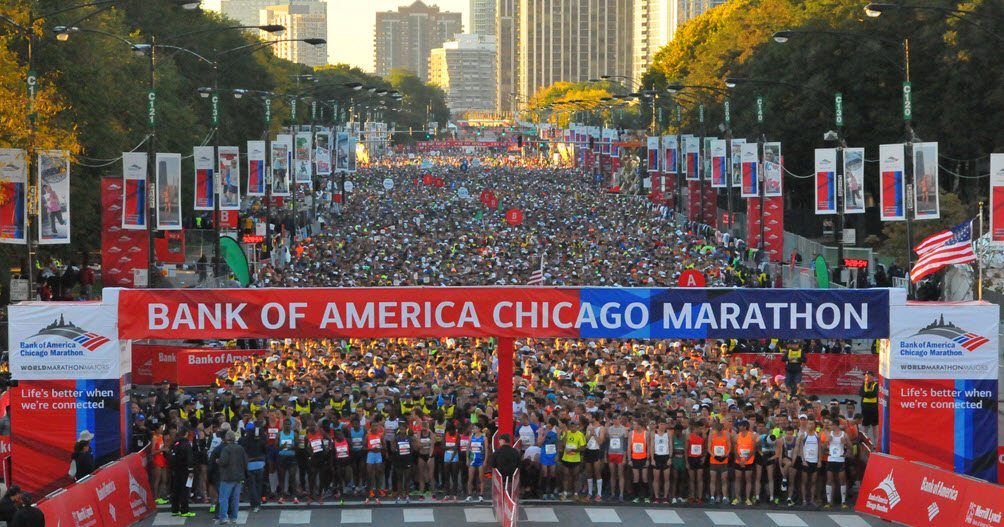
Leading up to the Chicago Marathon 2016 The Chicago Marathon provides an excellent course, plenty of support and, for me, a chance to visit home for a few days. It was no different for me this...

September 25 was going to be my day. The Ironman Augusta 70.3 triathlon was finally here. The race I had been training so hard for on one of my favorite courses. It was four-and-a-half months...
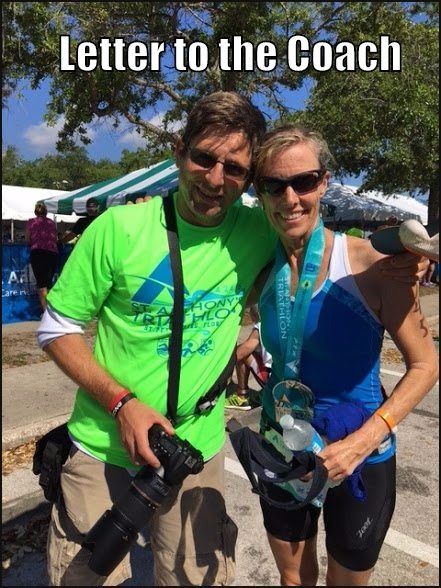
I have been an endurance coach for some time now. Once in a while, I receive an email from a client which chokes me up with pride. Today, I received one of those letters, so instead of sharing it...
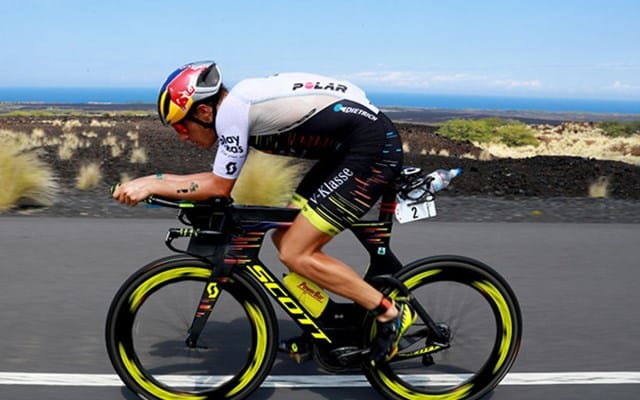
I found when looking for ways to get faster on the bike, is that there is so much information, from different coaches and experts, that it can be confusing and overwhelming. Personally, I...
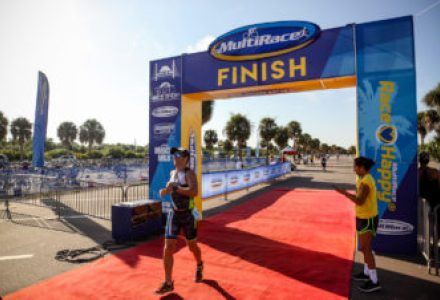
The previous post was a review of the FD3 Triathlon Series as if it was a product. Below you will find a more detailed account of my personal experiences during the race. Let me know in the...
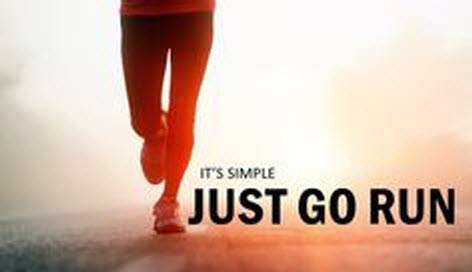
Happy Hump Day! Workout Wednesday’s will consist of favorite workout of mine that I either have prescribed to my clients or have been assigned by MY Coach. It might also be a favorite of yours. Feel free to send me any workouts you like. There will be an objective for every workout for specificity.
I am not a huge fan of weights or being in the gym. As the summer wore on and Florida continued to increase in heat I found myself spending more and more time in the gym and on the treadmill, but I still prefer to be outside. This workout will work leg strength as a replacement for a gym resistance workout or a supplement to. It can be done either on the Treadmill or outside with a hill that takes 2-3 minutes to run up, or here in Florida we use parking garages.
WU (Warm-up): Run Drills & Dynamic Stretching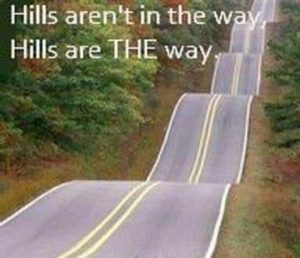
1-2 miles @ conversational pace
MS (Main Set):
Hill Bounders on uphill
Recover for 30 sec – 2 minutes
Speed over strides on Downhill
Repeat for up to 30 minutes
CD (Cool Down): 1-2 miles @ conversational pace
Lunges & Static Stretches
Objective: Leg strength, Aerobic capacity, Form Development & Confidence on Hills
Rate of Perceived Exertion (RPE): 5-7 on the uphills (Talking should be very difficult)
Description: Run a hilly course. Do not try to run fast on the uphills but rather concentrate on a good knee lift, strong arm swing, uplifted chest and full push-off extension in your back leg. Practice running efficiently on the downhills with high turnover and enough of a forward lean that your front leg lands directly under you.
Hill Bounders: go up the hill with a bouncy action and a good posture, concentrating on a good knee lift and arm swing with a “snap” with your ankle. You should be thinking Spring up the hill. Jog until recovered at the top.
Speed Over striders: Run down the hill with out breaking but increasing your cadence with the steepness of the hill. Instead of completely striding out elongating your stride, focus on increasing your cadence with a normal stride.
Biggest Mistakes: Running too fast up the hill rather than concentrating on form. Running too hard up the hill and getting into too much oxygen debt. This is not desirable in this phase .Putting more stress on the legs than they are ready for with too much bounding or downhill running and getting injured. Precipitating your peak with repeated speed bursts. Some people tend to develop speed very quickly once they start doing the hill circuit. If this is the case, go very easy with downhill striding and on the stride-outs. You’ll still have plenty of time to develop speed to maximum. Premature speed development would only lead to premature peaking and this should be avoided.
Warning: The first week of hill training is one of the times where injury is most likely to occur. This is a very demanding exercise, so be overly cautious and feel your way gradually. After about 2 weeks in this phase your legs could feel very tired and you may feel you’re actually slower. This is normal and will pass within a couple of weeks of consistently completing the workout.
I hope you enjoy this one. I know I do.
What kind of workout do you do for run strength?
Carpe Vitam!

On Tuesdays and/or Thursdays, I will do my best to give one simple fitness, triathlon or running tip, trick or piece of information that will provide some value to in either helping you to become more efficient, prevent injury, increase performance, have more fun or at the minimum give a review of knowledge that might not have crossed your path in a some time.
I find myself observing other runners while running and sometimes just hanging out here in Tampa. Due to the weather here lending itself to year-round training, I have no shortage of material to choose from.
My coaching practice’s number one priority is form, technique and injury prevention, so I routinely use other runners, with my clients to reinforce the form training I have provided. (Sorry, Tampa runners. If you happen to pass by me with a client, most likely you have been observed and surveyed for comparative analysis.)
With all of my observations, the number one issue that I see are runners that sit in the bucket. Of course, the question most people ask is what does sitting in the bucket mean?
Basically, it’s when the glutes(or bum) are not in line with the torso. The body looks like an “L” from the torso to the hamstrings. Natural running which when learned is much easier, more efficient and greatly reduces impact on the joints. The torso hips, glutes and ankles form a straight line.
[table “2” not found /]
The interesting thing is, that running should be instinctual right? Unfortunately, not anymore. Sociological factors have played into our bodies to a point where most Americans, cannot just decide to take up running without going through periods of injury.
For example, sitting at a desk all day will tighten the hip flexors so that it becomes extremely difficult to push the hips under the torso. The same thing is evident for playing video games on the couch for long periods of time.
The figure on the left is actually still a lot better than I have noticed out and about. The torso is still tall and the chest is still has a little bit of lean to it causing forward motion. A lot of runners I notice, sit in the bucket and lean back. What is this doing? Basically, gravity is working against the runner. The objective is forward motion but the glutes and the torso are sitting back, so in essence, the body and gravity are working against itself.
Another perception you will see is the heel strike of the runner. When that heel strikes the ground the impact reverberates all the way from the ankle through the legs, spine, neck shoulders and head. This is where most of the injuries take place.
By simply starting to incorporate, tilting the hips under the torso and leaning from the ankles instead of the waste, the body will start allowing gravity to be used instead of the legs as the sole source of momentum. Suddenly, the feet are striking the ground underneath the center of gravity and only the calf down to the metatarsals absorb the majority of the impact from the ground.
I continue to instill in my clients, running is powered by the core, not the legs. Use gravity as momentum and allow the legs to just go for the ride. To remain consistent, the core must be strengthened and hip flexors stretched to keep the glutes from returning to the bucket.
There are many techniques to help modify the behavior to allow for an efficient, safe and effective change of form. All it takes it the will to want to change and get better and you will.
The #1 tip – get out of the bucket.
Are you running in the bucket?
Did this information shed some light on any area of your running that might be in need of improvement?
Carpe Vitam!
(Seize Life!)
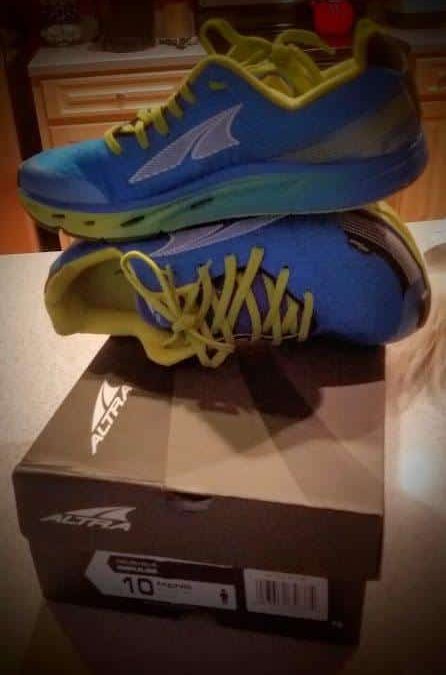

Are you seeing a pattern yet? Yes, I am becoming a huge fan of the 6 year-old running shoe company known as Altra. As I have been instructing clients in form techniques, and have found that most of the models Altra manufactures, lend themselves to my favorite principles.
The Altra Impulse is no different.
As with all of Altra’s models, my favorite advantage is their FootShape™ Toe Box. This is the incomparable wide toe box that Altra is known for. The toe box is makes any of Altra’s models recognizable from a good distance away. That is how wide it is. I enjoy the ability splay my toes and have my feet firmly hit the ground without them being cramped up. Wider toe boxes also allow the feet to develop more strength because the shoe is not tightening around the ball of the foot or the toes. The toes can move around, and tackle all kinds of terrain.
As you can see from the x-ray below, the amount of splay the toes are allowed in the Altra vs a traditional toe box. Imagine having access to the full splay of your foot while you run. What is amazing is that most runners do not even realize the limits that a traditional toe box causes. (Hmm, maybe there is an idea for a full post.)

The Altra Impulse is no different in this department. The FootShape™ toe box has been incorporated and has all the comforts of the other models I have run in.
I love the Zero Drop™ technology that Altra incorporates. When I run I have the ability  to utilize the full power and flexibility of my calf not to mention I can run as if I was barefoot, as our bodies were intended. Most traditional running shoes have a 12mm heel drop. This means that the heel is 12mm above the ball of the foot.
to utilize the full power and flexibility of my calf not to mention I can run as if I was barefoot, as our bodies were intended. Most traditional running shoes have a 12mm heel drop. This means that the heel is 12mm above the ball of the foot.
When we are barefoot, the heel and the ball of the foot are equal which is a Zero Drop™. This also helps with heel striking. Have you ever tried to heel strike while running barefoot? Even if you are a regular heel striker in shoes, it is almost impossible to heel strike while bare foot running. A huge effort has to be made to do that.
So, why runners continue to heel strike? If your heel is more cushioned in the shoe, then of course you will want to hit that area first. (Another post may be needed to explain a little more on this too…stay tuned.)
I love the Innerflex™ which are grooves at the bottom that create a more flexible sole.
One of the huge differences with the Altra Impulse is that they also incorporated their patented StabiliPod™ technology along side the Innerflex™. Now you have a stability shoe that is also somewhat flexible.
I have decided to put this feature as a liked feature more for others than myself. As a pure neutral runner I prefer to work allowing my body to support me, not my shoe, but Altra is marketing this shoe not only for running and triathlon, but for cross training as well.
The StabiliPod™ technology does really help in moving laterally, which is not something that is usual for runners, and especially those of us whom usually stick to the pavement. This is why I do like this feature.
 My absolute favorite feature of this shoe are the drainage holes in the sole. My very last test run with the impulse was an 8 mile run, immediately following a huge rain storm here in Tampa, Florida.
My absolute favorite feature of this shoe are the drainage holes in the sole. My very last test run with the impulse was an 8 mile run, immediately following a huge rain storm here in Tampa, Florida.
My route took me through numerous ankle deep puddles and while my socks remained damp, the shoe was clear of water within a few yards of the puddle. There was no squish from the sole of the shoe or my sock because as my foot pushed down on the shoe, the holes squeezed water out the holes. No more blisters from soaked uppers and water log socks release water as well.
The Altra Impulse also continues with Altra’s A-Bound™/EVA blend compound which sits directly under the foot and adds a return of energy and reduces ground impact.
The upper is a light material and does have a noticeable difference from the other models. The tongue and laces are curved with the shape of the shoe which differs from the straight tongue of traditional running shoes.

I actually enjoyed this new feature. The fit of the shoe felt more comfortable with the tongue falling in the same curve as my foot.
I rarely run without socks, but I did end up having to do go out for a couple of miles one day without socks, and they were extremely comfortable. While the upper is not seamless it is very close. There are only a couple of seems that surround the tongue, but they are covered with a light fabric that helps reduce any friction.
This is probably a very individual issue, but even though I sized up to a 10 from a 9 and a-half, after a few miles my toes still ended up moving forward till I they hit the front of the shoe. This probably has to do with the fact that I only lace my shoes tight enough to lock in my heel.
If you like your shoes laced up tight this probably will not be an issue.
The price point for the Altra Impulse is $120 dollars, which while competitive in the market place it still is a little expensive. In this day and age where people are scrounging for liquidity, I really would like to see at least one company come out with a quality shoe that retails for under $80. Of course that is my opinion and my opinion only.
Quality – 4/5
Upper – 5/5
Outsole – 5/5
Flexibility – 4/5
Comfort –5/5
Appearance – 4/5
Cost – 3/5
Have you ever run in an Altra Running Shoe?
What were your experiences?
Which model do you like best?
Carpe Vitam!
(Seize Life!)
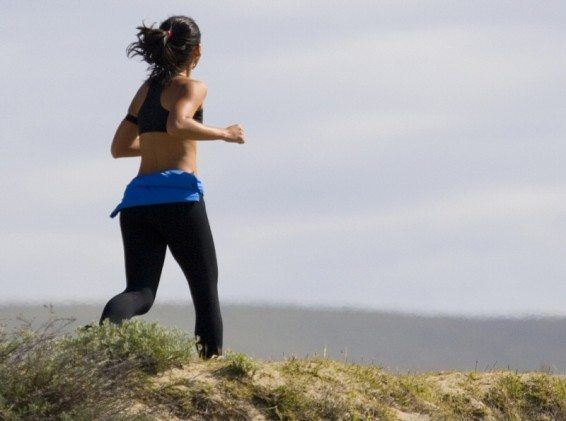
I can hear it now….”Know wonder they call you a Goof…you are crazy.”, “So, if I run slower I will get faster? You are out of your mind.” It was not to long ago I used to think the same thing, but as with everything I post, there are reasons and science to back it up.
Let’s face it, logic would dictate that pushing the pace of your easy days, as close to race pace as possible, would help you get fit faster and help you speed up, right? A lot of coaches, including myself, will tell you to run slow on your easy days, and easy days should be making up anywhere from 50-75% of your weekly mileage.
I have clients continuously asking me, “why are my easy days so slow?” The latest is my famous sit downs with my runners telling them to slow down after examining their data and finding them running tempo speeds during an easy day.
The answer to the question is what Arthur Lydiard and most other coaches would call the aerobic system. The aerobic system, or aerobic development, is the one of the most important fundamentals into unlocking your true potential.
Let us first check the stats on the energy contribution the aerobic system provides for races. As you can in the chart below, even the shorter events like the mile, over 80% of the energy required to run the race is produced via the aerobic system.
Aerobic training is the scientific fact that to move your body at higher intensities, the body needs to break down sugar and convert it to glycogen so it can be used as energy.
The aerobic system plus oxygen starts a chemical reaction known as Aerobic Glycolysis which continuously powers continuous endurance activities. In the aerobic system energy ATP is produced through Pyruvic Acid and Lipid/Protein fragments entering the Kreb Cycle and the Electron Transport Cycle.
Uh…what?
During aerobic respiration (yeah, that’s breathing) the body uses all the oxygen it needs to power the muscles. When you are running in your “aerobic zones” (easy runs), your muscles have enough oxygen to produce all the energy they need to perform.
See? Improving your capacity to transport and efficiently use all the available oxygen to produce energy will enable you to race faster since this makes up 85-99% of the energy needed to race.
Since running easy is aerobic development, what better way is there to train the aerobic system? There is none.
Capillary development – capillaries are the smallest of the body’s blood vessels and they help deliver oxygen and nutrients to the muscle tissues while exporting waste products out. The larger the number of capillaries you have surrounding each muscle fiber, the faster you can transport oxygen and carbohydrates to your muscles.
Aerobic training (easy running) increases the number of capillaries per muscle fiber, thus improving how efficiently you can deliver oxygen and fuel to your working muscles and how quickly they can clear waste products.
Myoglobin is a protein in the muscles that binds the oxygen that enters the muscle fiber. When oxygen becomes limited during intense exercise, myoglobin releases oxygen to the mitochondria to produce more energy.
The more myoglobin you have in the fibers of your muscles, the more oxygen is transported under aerobic stress. Like, uh, during a race. Aerobic training increases the amount of myoglobin you have in your muscle fibers.
Mitochondria are microscopic organelle found in your muscles cells that contribute to the production of ATP (energy). In the presence of oxygen, mitochondria breakdown carbohydrate, fat, and protein into usable energy.
Therefore, the more mitochondria you have, and the greater their density, the more energy you can generate during exercise, which will enable you to run faster and longer.
Aerobic training increases both the number and the size of the mitochondria in your muscle fibers.
Suffice it to say that aerobic development is the single most important factor to long-term development.
Of course, track workouts, VO2 max sessions, tempo runs and cross training will increase your fitness and are still incredibly important to racing faster. However, nothing will help improve continuously like developing the aerobic system.
Aerobic development is dependent upon running in your aerobic zones (for my runners Zones 1-3). This is why running faster on your easy days develop the aerobic system. Once you step out of those aerobic zones, on easy runs you diminish development of your aerobic system, but you also increase the chance for injury. Nope, two negatives do not make a positive in running.
This is one of the single biggest mistakes runners of all experiences make in their training.
As a coach and trainer I have always distinguished myself because I am always able to give my clients and readers the “why”. (Sometimes my clients end up telling me to just shut my mouth. when I am training with them because I am continuously telling them why they are doing each movement of an exercise or workout. I guess it may not be an advantage all the time. Go figure.)
Scientific research has been able to identify how the aerobic system adapts and responds to certain training paces. Physiologically we know:
It is pretty clear now right? Your optimal easy run pace for aerobic development is between 55 and 75 percent of your 5k pace, with the average pace being about 65 percent.
It’s also evident that running faster than 75% of your 5k pace on your long run has very little additional physiological benefit.
In fact, the research indicates that it would be just as advantageous to run slower as it would be to run faster. Running around half of your 5k pace is pretty easy right? Wouldn’t you know it, the evidence is clear that it still provides near optimal aerobic development.
Feel free to let me hear your feedback. I welcome any other case studies, personal experiences and other research as I am always learning. I provide you with the best content I can, but I have an open-mind and know that there may be other research out there that may negate information I post.
~IronGoof

It has been a while, and I have a ton of ideas that I am anxiously awaiting to share with you. Unfortunately, time has been getting away from me. Between training myself, a full-time job and being at capacity with 15 individual clients I am struggling for time to post. I promise I will figure out a way to make time. I am so lucky to have such great people to bounce ideas off of, that sometimes, by not posting, I feel like I am letting all of you down, so I promise to post more even if the posts end up being a lot shorter than usual. (Which the length is probably not your favorite part of it anyway. I know I ramble.)
Before I get into the nitty-gritty of my personal opinion of compression, a disclaimer.
I am not a medical professional. The opinions that are shared on this post come from research, my own experiences and the experiences of athletes I have personally witnessed and information I have researched. Every athlete/person has a different body and some products and/or methodologies may be advantageous for some and may even be dangerous for others. This post deals with my beliefs and my research. (Was that clear?)
Lately, most of the questions from other athletes, including clients of mine, have asked about compression. This usually centers around calf sleeves, but does include some of the other compression apparel as well. My answer is usually, for recovery and for temporary use they are great, but not for training. Why? Great question.
I am going to use calf sleeves as my example.

While running, biking, swimming or any major activity using the legs, the muscles are constantly in motion. That motion is what naturally makes the muscles stronger. The muscle moves and is loaded with either more repetitions, or with weight. The full range of motion of each muscle is imperative to the strengthening of the muscle. Compression holds that muscle in place and limits the movement therefore limiting the range of motion. While compressed the muscle cannot fully develop while training. Let’s take a look at the anatomy of the lower leg in the running position.


As you can see the gastrocnemius muscle and Achilles tendon, when the knee is flexed, both constrict and then elongate when the knee straightens. Here is the epitome of the range of motion naturally occurring when running. The more flexion and constriction that take place the more they are stretched causing the breakdown of the fibers. After the recovery period the fibers wrap tighter and in more abundance aiding in a strength and endurance. Now imagine that gastrocnemius muscle remaining constricted due to a calf sleeve. It seems to me that this would dictate that it would not have full range of motion also causing the Achilles tendon to remain stretched without the full ability to absorb the impact. This could unintentionally damage the Achilles tendon, the gastronemius muscle and the soleus muscle. If not damage, it will limit the ability to be strengthened. This is why I personally do not recommend calf sleeves during training workouts.
Recovery
I do however do not mind wearing compression while in recovery to include immediately following the cool down of a workout. I mentioned the healing of the fibers earlier. In order for the fibers to heal and become stronger after the breakdown, blood must be pumped through the muscle and with it water for hydration. Compression does help to isolate that area helping to keep the majority of the blood and water being pumped through the body to the point of the compression. With the legs either elevated or even walking around and at that point limiting the movement, it would allow for the blood to pool in that area helping to re-hydrate the muscle thereby helping to heal faster. In turn, an occasional training run or race, with compression at the tail end of an injury, might also benefit, but in a very limited quantity, and duration.
–IronGoof